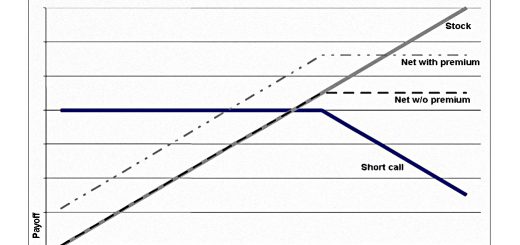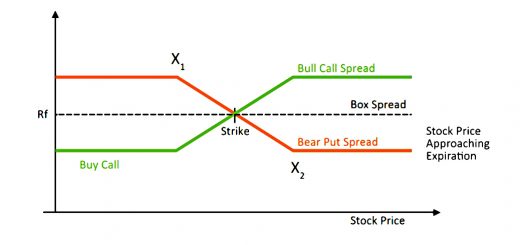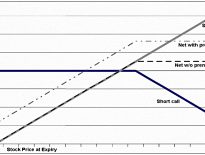Options 4 – Gen Y Finance Guy

Today’s post is the fourth in our series on options trading. We look at the options strategy used by Dom at the Gen Y Finance Guy blog.
Contents
The story so far
Skew
In the first two articles, we looked at the strategy used by ERN from the Early Retirement Now blog, and at a paper from Antti Ilmanen of Expected Returns fame:
- People have an aversion to negative skew, which means that they overpay for insurance and lottery tickets.
- This seems to be related to the over-weighting of salient but unlikely events (which does not contradict Taleb’s assertion that we underweight “impossible” events.
- So selling insurance and/or lottery tickets can be profitable.
- Selling insurance (writing options) is the easier of these two strategies for private investors to implement.
ERN’s options strategy
- ERN says that options are not as complicated or (necessarily) as risky as most people imagine.
- He successfully uses a strategy of selling ATM index puts in large size.
- ERN uses Interactive Brokers as they have the cheapest per contract commissions.
- ERN’s account size is more than $660K and is now 35% of ERN’s net worth, and around half of his net worth outside retirement accounts.
- He uses the shortest contract possible, which means that he normally writes options that expire in one or two trading days.
- He thinks this means that he gets bigger premiums per unit of risk.
- He also likes to have the maximum number of independent bets in order to access the “house edge”.
- ERN uses leverage for two reasons:
- To boost the return from the likely base rate
- To overcome taxes – ERN uses a 1/(1-tax rate) approach as a minimum.
- For a 20% tax rate, this would mean gearing of 1/0.8 = 1.25 times.
- The delta on a typical put that ERN writes is 0.15, which means it is 15% as volatile as the underlying.
- So even with say three times leverage, the volatility would be much less than the underlying.
- Long-term, ERN expects a 12% gross return (8.5% after-tax) with around 7% volatility, which is a lot better than the index.
- From 2000 to 2018, through two bear markets and two bull markets, the strategy outperformed the S&P 500.
- It also had lower volatility (10% pa, cf. 15% for the S&P 500) and it had smaller and shorter-lived drawdowns.
- The strategy also traded successfully through October 2018 – the worst month for the S&P 500 for seven years, down 7%.
- The market never dropped much below ERN’s strike prices.
- At the time of the last update, ERN was using reduced leverage of 2-2.5 times.
- The time value of the options had been reduced from 7% down to 5-5.5% pa.
- Using a $300 premium target on a nominal option value of $280K gives an unleveraged return of 5.57%.
- ERN now targets strikes that are 5 Delta or 1.5 to 2 standard deviations below the index level.
- The loss allowance (how much premium will need to be given back) has been increased from 50-55% up to 60%.
- Returns are 4.7% from the options and 4.6% from the margin cash portfolio.
- That’s a 9%+ return overall, or more than 7% above 2% inflation expectations.
- That’s better than long-run stocks with better drawdowns and lower volatility.
Fritz’s options strategy
Fritz from The Retirement Manifesto uses three options strategies (sell a put, sell a covered call, roll a position), in a process with several steps:
- Sell a put below the money on a stock he likes.
- This strategy might produce an annualised return of around 8%.
- Repeat this until finally the option is exercised, and he owns the stock.
- Sell a covered call which is above the money (say by 10%).
- This strategy might produce an annualised return of around 7%.
- He also still gets the dividends from the stock.
- Repeat this process until the call is exercised and he no longer has the stock.
- Begin again at step one.
- As a variation of step four, sometimes Fritz will roll his position into the next quarter.
- He does this when the stock price is above the strike and a call expiry is looming, but he doesn’t want to sell.
- The roll is two trades – buying back the near call and selling a far call.
- Fritz might also roll the initial put if the stock is trading below the strike price and he would rather not have to buy the stock.
Fritz uses TD Ameritrade (ThinkOrSwim) rather than Interactive Brokers.
- And his account is less than 10% of his net worth, compared to 35% for ERN.
- He also uses three-month options rather than weekly or daily ones.
Fritz didn’t provide any backtesting/data on historical returns for his strategy.
- I think ERN mentioned that covered calls had a similar return to his out of the money puts, but I’d rather hear this from someone who is using the technique.
Gen Y Finance Guy
Dom from Gen Y Finance guy wanted to show that options can be less risky than buying stocks.
He focused on two familiar strategies:
- The covered call
- Selling a put (short put)
Dom also uses the TD Ameritrade (ThinkOrSwim) platform.
- Dom uses six month options.
Definitions
Dom started with a list of definitions, which I’ve shortened here:
- Option = derivative based on another asset’s price
- Strike price = price at which the option can be exercised
- Expiry day is the date that the option must be exercised before
- Long = buying
- Short = selling (something you don’t have)
- Call = as a buyer, the right but not the obligation to buy something the future at a pre-arranged price
- As a seller, you get paid upfront but are obligated to do the deal if the buyer exercises the option.
- Put = as a buyer, the right but not the obligation to sell something the future at a pre-arranged price
- As a seller, you get paid upfront but are obligated to do the deal if the buyer exercises the option.
- In the money (ITM) = the option is worth exercising because the current price is above (call) or below (put) the strike price.
- Out of the money (OTM or OOTM) = the option is NOT worth exercising because the current price is below (call) or above (put) the strike price.
- At the money (ATM) = market price is the same as strike price
- Intrinsic value = money to be made from exercising the option
- Only applies to ITM options
- Time value (extrinsic value) = cost of option – intrinsic value
Comparing three strategies
The main part of the article compares three by now familiar strategies for getting long the S&P 500 index:
- Buy the SPY ETF
- Your only downside protection/margin of safety here is the dividend yield (around 2.2%)
- Buy the ETF and sell a covered call on it (1-2 strikes OTM, above the current price)
- Now you also have the option premium of 8% as protection
- Sell a put at the same OTM strike price as the covered call, for 10%
- If the put is exercised, you can turn it into a covered call
The options strategies are preferable because of the larger margin of safety.
Volatility
Dom explains that volatility is your friend:
The higher the volatility, the higher the premium you will be able to extract from the marketplace. More premium translates into an increased margin of safety.
During large moves to the downside, fear increases, which in turns increases volatility as investors look to buy protection to decrease their losses (volatility and price have an inverse relationship).
Conclusions
We’ve now looked at the way that three bloggers use a couple of options strategies:
- Selling puts
- Selling covered calls
I’m sold on the strategies, but we have a few more bloggers to look at before I get started on how to implement these techniques here in the UK.
- Until next time.















